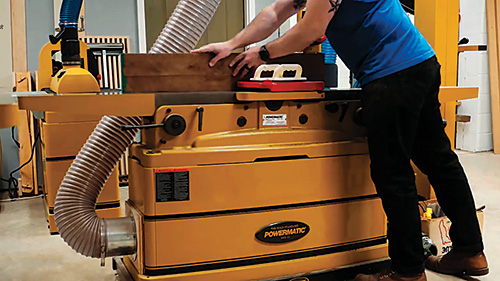
I’m a beginner woodworker and I recently bought my first tool: a table saw. Now I need to do something about leveling the stock. What should be my next purchase? A large bed jointer, a planer, or a drum sander? The drum sander seems ideal, but I haven’t heard of anyone else recommending the drum sander for finishing and thicknessing.
John Brock: Since your first purchase was a table saw, I hope you sprung for an excellent fence and a high quality blade. Then you can make yourself an accurate crosscut sled. If not, I’d recommend those upgrades before anything else.
You can make a lot of projects by buying S4S stock (Surfaced 4 Sides), though it is limited in size and is the most expensive way to buy wood. The reason is that someone else has gone to the trouble and expense of making the four surfaces flat, smooth, and parallel. Many species of wood are not even available in S4S. Similarly, S2S lumber, which is available in nearly all commercial species, has two sides parallel. Unfortunately, parallel does not necessarily mean flat and parallel.
A jointer is used to make stock flat, and to make an adjacent edge at right angles. A planer is used to make the face being cut, parallel to the one on the opposite side. I think the next tool should be a jointer, followed closely by a planer.
Ideally, you want to joint one face to make it flat, then run it through a planer to make it parallel to the already flat side. With a table saw, jointer, and planer, you can buy the least expensive grade of stock, called “rough.” You will make a lot of shavings turning it into flat, smooth, parallel stock, but the savings can be substantial.
John Swanson: You have two distinct requirements. The first is to plane one side flat, and the second is to get uniform thickness. The tool of choice for getting a flat surface is a jointer. For this operation, a 6″ or 8″ width with a long bed is best. For thickness, the tool of choice is a thickness planer. I would encourage you to look at the tool reviews in woodworking magazines.





